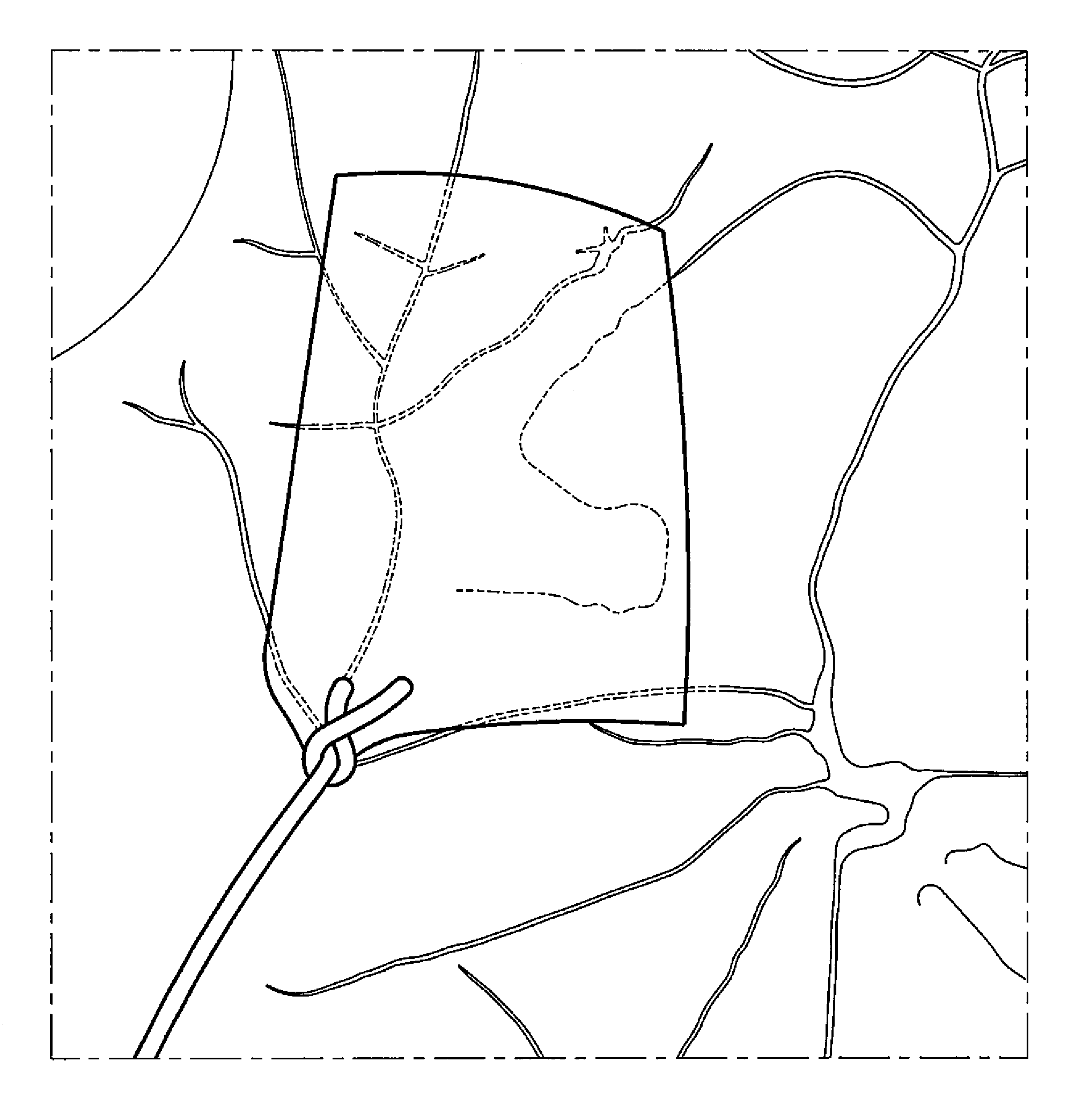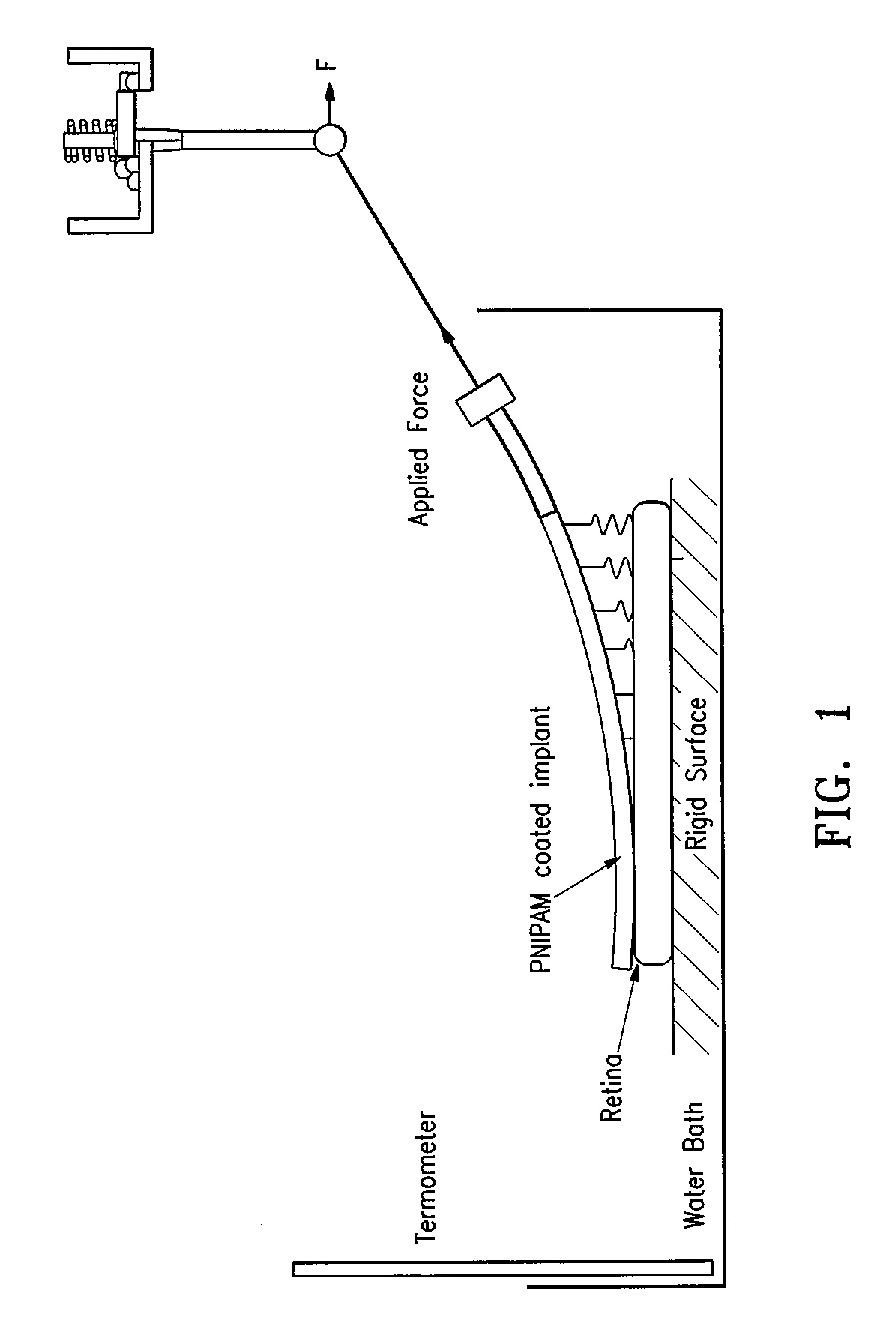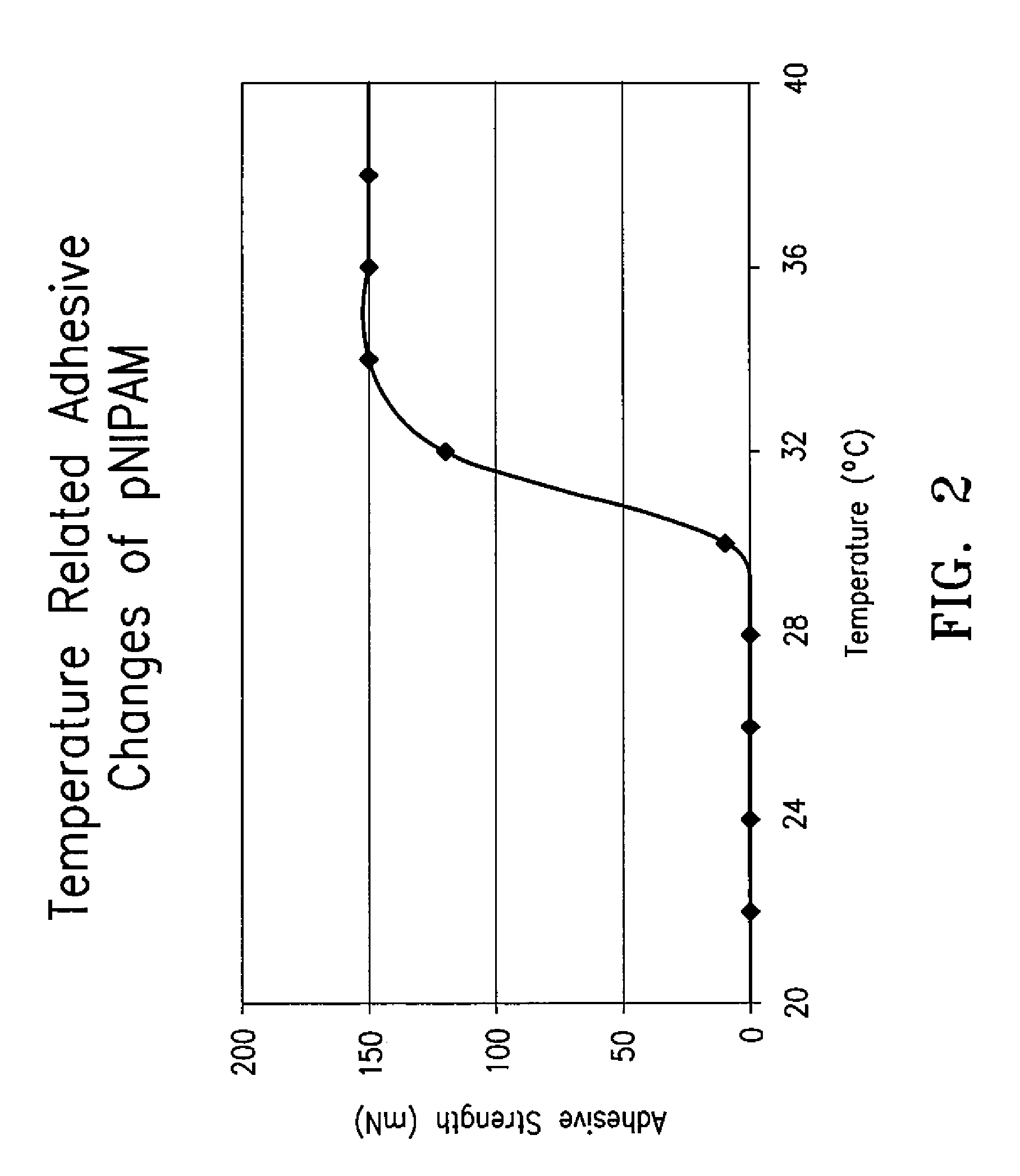Reversible thermoresponsive adhesives for implants
a technology of thermoresponsive adhesives and implants, applied in the field of reversible thermoresponsive adhesives, can solve the problems of easy hydrophilicity and easy hydration of polymers
- Summary
- Abstract
- Description
- Claims
- Application Information
AI Technical Summary
Benefits of technology
Problems solved by technology
Method used
Image
Examples
example 1
[0031]Posterior vitreous detachment (PVD) was created in porcine retina by soaking each porcine retina in 1.5 U (units) of plasmin for 4 days, while refrigerated at 4° C. pNIPAM-grafted parylene was attached to porcine retina at 37° C. in 15 trials and detached at 28±2° C. in all 15 trials.
[0032]To determine the adhesive strength, the retina was glued with cyanoacrylate to an aluminum cylinder and placed in a Bose ELF 3100 test instrument, and the parylene pNIPAM was adhered to the internal limiting membrane surface of the retina. The adhesive strength was measured using Dynamic Mechanical Analysis equipment. However, the retina was too delicate to quantify the adhesive strength of bioglues as the retina tears before adhesion fails. The adhesive strength was measured as either surface tension for controls (<10 mN i.e. plain parylene) or well above surface tension (50-400 mN) (data not shown).
example 2
[0033]Materials were coated with pNIPAM by plasma deposition as described by Pan, et al.10 After NIPAM (97%) (Aldrich Milwaukee, Wis.) was polymerized, the exposed surface of the implant materials (polyimide, parylene and PDMS) were coated with pNIPAM. The pNIPAM-grafted surfaces were rinsed three times with cold deionized water to remove uncrosslinked molecules before use.
[0034]Enucleated pig eyes were transferred to the laboratory in cooled oxygenated 0.01 M phosphate-buffered saline (PBS, pH 7.4), and the cornea, lens, and vitreous were totally removed. Vertical relaxing incisions were performed through the eyecup from the periphery towards the optic disc, leaving the retina intact at the posterior pole. The retina was stabilized over a soft plastic sheet by pinning with four 25-Gauge needles, in order to keep the retina flat and facing upward over the scleral surface. This preparation was irrigated by phosphate buffered isotonic ringer lactate solution in a water bath.
[0035]The ...
PUM
| Property | Measurement | Unit |
|---|---|---|
| temperatures | aaaaa | aaaaa |
| temperature | aaaaa | aaaaa |
| temperature | aaaaa | aaaaa |
Abstract
Description
Claims
Application Information
 Login to View More
Login to View More - R&D
- Intellectual Property
- Life Sciences
- Materials
- Tech Scout
- Unparalleled Data Quality
- Higher Quality Content
- 60% Fewer Hallucinations
Browse by: Latest US Patents, China's latest patents, Technical Efficacy Thesaurus, Application Domain, Technology Topic, Popular Technical Reports.
© 2025 PatSnap. All rights reserved.Legal|Privacy policy|Modern Slavery Act Transparency Statement|Sitemap|About US| Contact US: help@patsnap.com



